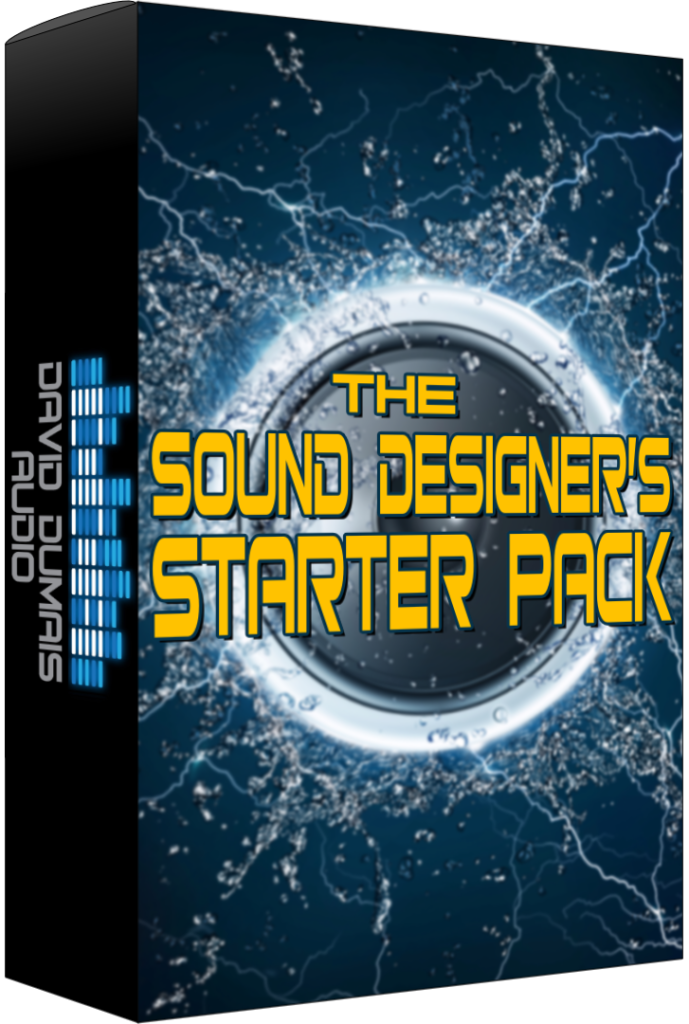*Please note that this blog post may contain affiliate links*
Sound Design Passive Income Workshop: https://daviddumaisaudio.com/workshop
Are you planning to create a sound effect pack from scratch? Selling sound effects online is a great way to earn passive income and make money month after month.
Over the past 5+ years, I have created more than 10 sound packs and in this video, I share my process for creating sound effect packs step by step.
1. Defining Your Target Audience
The first step towards creating a sound pack is defining your target audience. This is crucial because it helps you determine the kind of sound effects to create, how to package them and deliver them. You may want to consider the following target audiences:
- Game Developers: Solo or Indie Game developers usually require sound effects that are 48 K 24 bit, drag and drop ready.
- Sound Designers: you may want to create sound effects with a higher quality of 96kHz 32bit or even higher if possible. Sound designers usually require sound effects that offer flexibility in their workflow.
- Video Editors: Though I don’t have much experience selling to video editors and content creators, I presume they would typically prefer drag and drop style sound effects without much tweaking involved.
2. Choosing a Theme or a Category for Your Sound Pack
The second step is to choose a theme or category for your sound pack. You may want to consider two approaches:
- Theme-based: You could create all the sound effects required for a particular game, such as a platformer game or a first-person shooter game.
- Category-based: You could create all the sound effects for a specific category, such as sci-fi weapons or footsteps.
By choosing a theme or category for your sound pack, you can focus your energy and sound pack in one direction.
3. Create The Folder Structure
This is the step where you create the actual folder structure that you will deliver to customers when they purchase the sound pack.
Creating the folder structure ahead of design sound effects will focus your work so you know exactly what sounds you need and where they go once they are created.
4. Design Your Sound Effects
Now is the time to take out your recorder and start recording, editing, and designing sound effects. Be creative here and have fun.
A short word of warning: make sure to only use your own recorded materials for sound packs you plan on selling. Most 3rd party sound libraries do not allow you the license to design and sell sound effects using their materials.
5. Renaming Your Sound Effects
At this stage, I like to batch renaming all my sound effects using the UCS naming convention. I do this using the UCS renaming tool script inside of reaper which makes it really quick and easy to batch rename sound effects.
6. Add Metadata
Metadata is information about your sound file. Everything from the track name, description, sample rate, bit depth, and file format is metadata information.
Metadata is very useful for sound designers who have large sound libraries and need a way to quickly find sounds they need for their work. In this case, they will use software programs such as Soundminer or Basehead or Soundly (free) to quickly find the audio files they need by searching through various metadata fields.
Personally, I use Soundminer as I can import/export metadata information via CSV files using Excel. I can then quickly add and edit metadata to all my sound files.
7. Create Promotional Materials
Now that are sound pack is complete and metadata information is set, we are almost ready to upload and start selling. We are only missing promotional materials which include cover art, demo track, and asset list.
Cover art is the visual representation of your sound pack. This can be created by either hiring a cover art design or you can do it yourself (as I do) using software such as Affinity Photo.
Your demo track is the audio preview of your sound pack. Here I like to place all my best sounds from the sound pack so customers know exactly what they’ll be getting if they decide to purchase.
The asset list is a full list of all the filenames and description that is included in the sound pack. The asset list allows customers to go through and see how you named, categorized, and detailed the metadata of your sound pack before purchasing it.
8. Upload To Your Desired Platforms
Now comes the time you’ve been waiting for. Here is the step where you can finally upload all your hard work to the platform of your choice.
There are many online platforms that sell sound effects to be sure to choose the best for your target audience.
Unreal Engine Marketplace: indie game developers
Unity Asset Store: indie game developers
asoundeffect.com: audio designers and audio editors
Epic Stock Media: indie game devs
Sonniss.com: sound designers
Pond5: content creators
AudioJungle: content creators
MotionArray: video editors, content creators
MotionElements: video editors, content creators
Final Thoughts
Creating a sound pack requires time, effort, and creativity. By following these 8 steps, you will be able to a clear guide to help you follow through and publish your first sound pack.
If you want to go deeper and learn more about earning passive income by selling sound effects online, check out my free workshop where I share how I earn $200-$500+ per month: https://daviddumaisaudio.com/workshop
If this was valuable to you, please consider sharing it!
Have any questions or comments?
Leave them down below!

Hey David,
Thank you for sharing this excellent article. What tools or techniques do you use to understand the market? How should I decide which sound categories will benefit the most?
I do research on the marketplaces where I want to sell. You can usually filter by categories like ‘best sellers’ or ‘most popular’. This will usually give me some ideas of what I could work on.